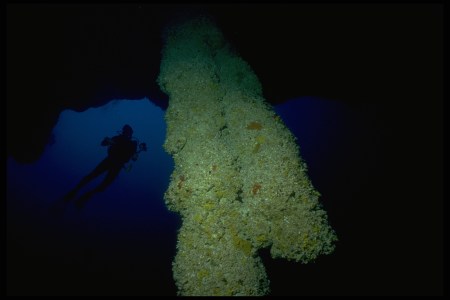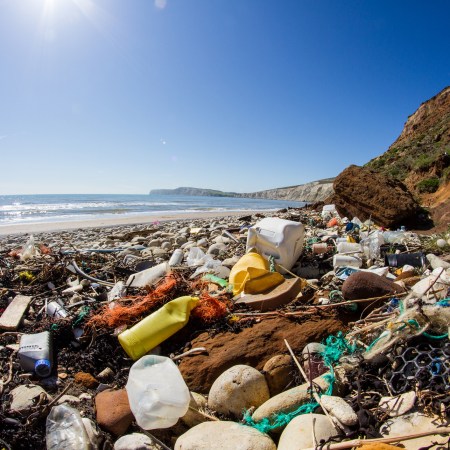Microplastics have become a cause for alarm in recent years for a number of reasons. First and foremost, there’s the phenomenon of humans and other living things ingesting plastic. Recent research has found that humans could be consuming a credit card’s worth of plastic each week; even in microscopic amounts, that still sounds unnerving. As a pair of scientists from Yale University pointed out, toxic chemicals can also adhere to microplastics, which can lead to health issues for animals that eat them.
What’s also worrying about microplastics is the degree to which they’ve spread all over the globe. Plastic waste has been found in remote underwater caverns; and now, a new study reveals that microplastics have also found a foothold in Arctic ice.
Richard Branson Found Plastic at the Bottom of the Great Blue Hole
Exploration of the 410-feet-deep, pristine ocean sinkhole discovers pollution from plastic bottles.The study, published in the journal Environmental Science and Technology, found evidence that Arctic ice algae “could trap microplastics from melting ice and ambient sea water.” The study describes the algae in question, Melosira arctica, as something that “could act as a key vector to food webs near the sea surface and on the deep seafloor” — in other words, potentially spreading the microplastics that it has ingested to other aquatic life.
As an article at BGR on the study points out, these findings could help explain the spread of microplastics throughout the Arctic. It’s one thing to learn that microplastics are prevalent in the suburbs; it’s something else entirely to learn that they’ve made inroads in some of the most remote places on Earth.
Scientists are still exploring the full implications of microplastics, but this sounds like another alarming discovery.
Thanks for reading InsideHook. Sign up for our daily newsletter and be in the know.


















